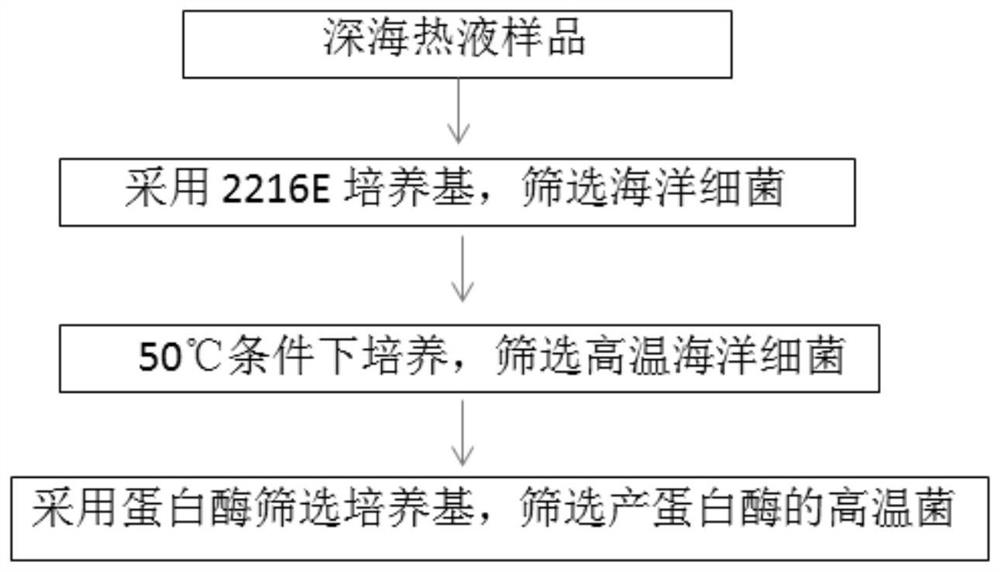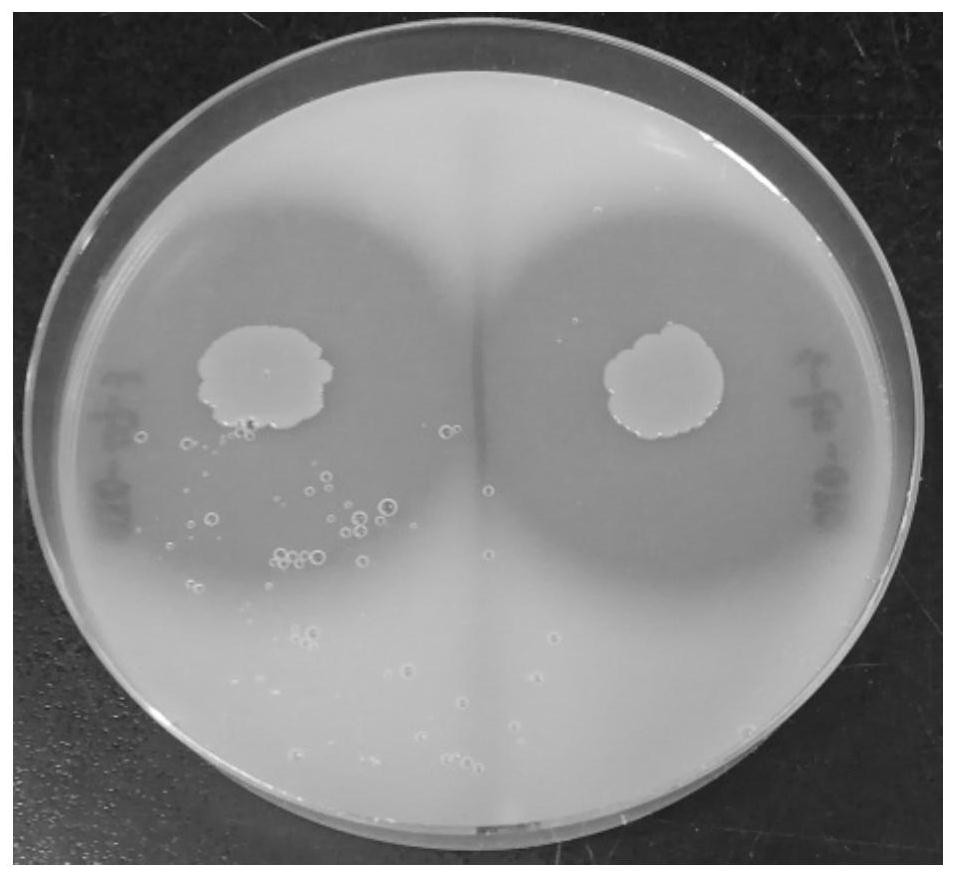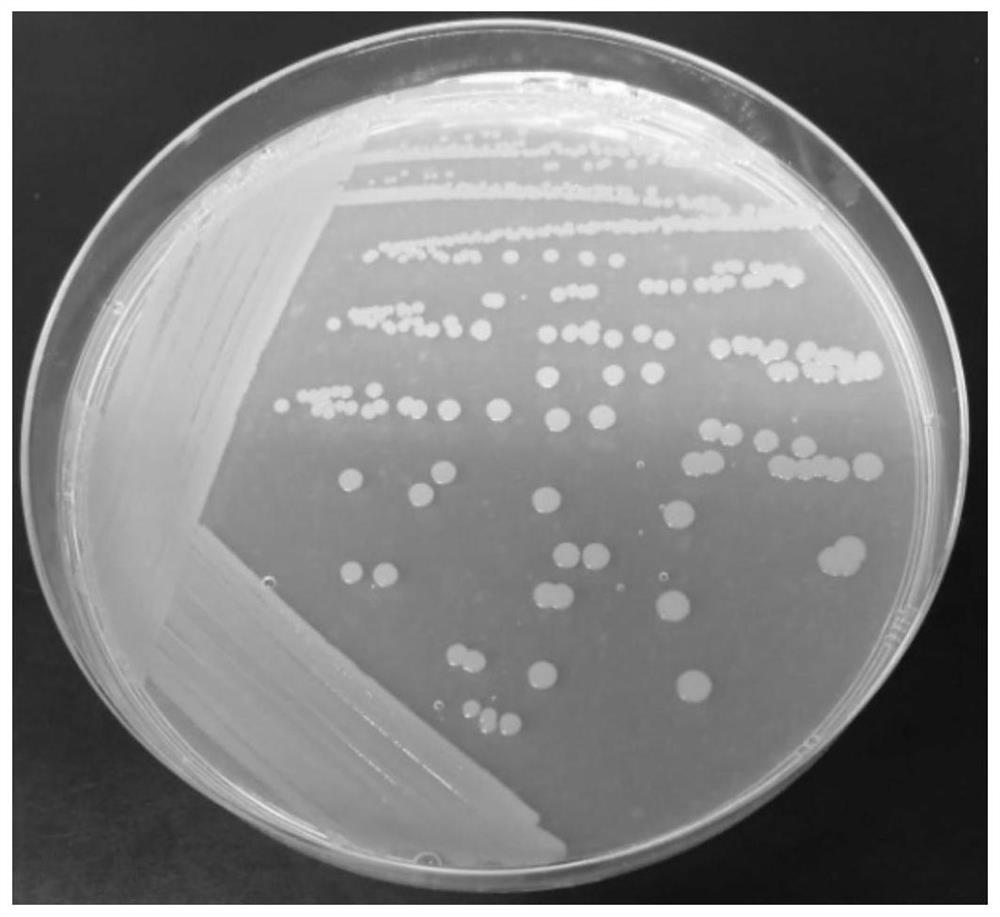A kind of thermophilic deep-sea microbacterium and its application
A deep-sea microbacteria and seed technology, applied in applications, bacteria, microorganisms, etc., can solve the problems of easy clogging of pipelines, increased costs, poor salt tolerance, etc., and achieve the effect of improving quality, increasing energy consumption costs, and simple process
- Summary
- Abstract
- Description
- Claims
- Application Information
AI Technical Summary
Problems solved by technology
Method used
Image
Examples
Embodiment 1
[0033] Example 1: Screening and identification of deep-sea microbacteria P-47-3
[0034] The process of screening high-temperature bacteria producing protease is as follows: figure 1 shown. Firstly, the water samples obtained from the Okinawa hydrothermal area in Japan were isolated by the dilution coating method of MA2216E medium (Difco, product number: 212185), and a total of 42 strains were isolated. Through temperature experiments, 12 strains that can continue to grow at 50°C were initially screened out. Adopt protease screening culture medium again, point inoculation flat plate, observe after cultivating 3-5 days, it is positive to form transparent circle, screen to 6 strains of protease-producing bacterial strains, wherein the transparent circle of P-47-3 bacterial strain is the largest (such as figure 2 shown).
[0035] The protease screening medium was prepared according to the following proportions: (1) Weighed 4 g of commercially imported skim milk (Difco, produc...
Embodiment 2
[0046] Embodiment 2: the property of protease produced by deep-sea microbacterium P-47-3
[0047] The protease activity was measured by the Folin-phenol method, and the Folin-phenol reagent was purchased from Solebol, Cat. No. F8060.
[0048] Step 1: Make a Standard Curve
[0049] Take 14 test tubes and divide them into two groups, add 0, 0.1, 0.2, 0.4, 0.6, 0.8, 1mL standard protein solution (250μg / mL) respectively, make up to 1mL with water, add 5mL reagent A, mix well, and store at 20-25℃ Let it stand for 10 minutes, then add 0.5mL reagent B, shake it up immediately, keep it warm at 20-25°C for 30 minutes, and then measure the color at 500nm. Measure the optical density value, get the mean value (table 1) of two groups of measurements, take the protein concentration as the abscissa, the optical density value as the ordinate, and draw the standard curve value ( Figure 6 ).
[0050] Table 1: Casein Standard Curve Data Sheet
[0051]
[0052] Step 2: Inoculate Exobacte...
Embodiment 3
[0055] Embodiment 3: Utilize deep-sea microbacterium P-47-3 fermentation to produce fermented fish paste
[0056] Step 1: Preparation of cell liquid culture of deep-sea microbacterium P-47-3: take the strains stored at -80°C and streak on LB solid medium, culture at 40°C, pick a single colony and inoculate it in a 25mL LB medium In a 100mL Erlenmeyer flask with base, the culture temperature was 40°C, and cultured on a shaker at a speed of 150r / min for 20-24h to the mid-logarithmic growth phase, and the cell liquid culture of deep-sea Exiguobacterium P-47-3 was obtained;
[0057] Step 2: Shake flask fermentation culture: the inoculum size is 2-5% (v / v), inoculated in a 500mL Erlenmeyer flask with 200mL LB medium, the culture temperature is 40°C, and the rotation speed is 150r / min on the shaker Under culture for 20-24h to obtain a fermentation broth.
[0058] Step 3: continue the shake flask fermentation culture: the inoculum size is 2-5% (v / v), inoculated in 1000mL LB liquid m...
PUM
 Login to View More
Login to View More Abstract
Description
Claims
Application Information
 Login to View More
Login to View More - R&D
- Intellectual Property
- Life Sciences
- Materials
- Tech Scout
- Unparalleled Data Quality
- Higher Quality Content
- 60% Fewer Hallucinations
Browse by: Latest US Patents, China's latest patents, Technical Efficacy Thesaurus, Application Domain, Technology Topic, Popular Technical Reports.
© 2025 PatSnap. All rights reserved.Legal|Privacy policy|Modern Slavery Act Transparency Statement|Sitemap|About US| Contact US: help@patsnap.com



